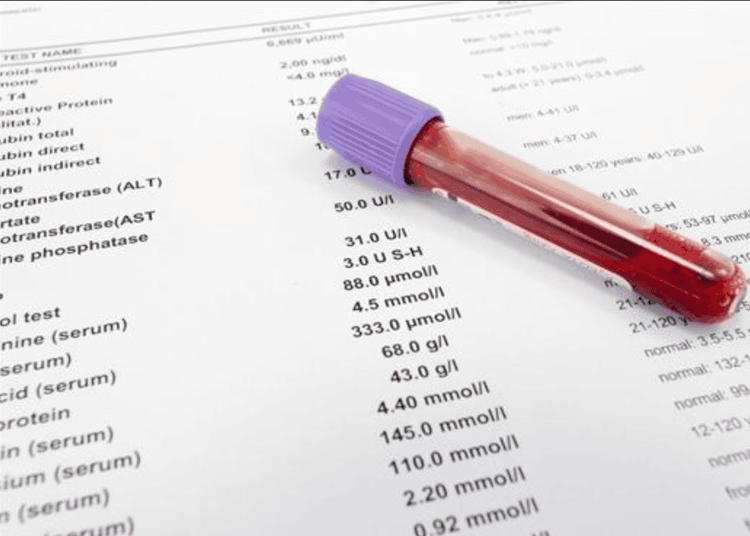The article was written by Specialist Doctor II Le Thi Na - Doctor of Hematology - Laboratory Department - Vinmec Times City International Hospital.
The total blood cell analysis test is one of the routine tests performed during medical examination, medical examination, emergency treatment and monitoring of the patient's treatment process. One of the important blood count indicators is the HgB value. So what does the HgB number in a blood test mean? and what factors change the hemoglobin test results.
1. What is the HGB Test Index?
The HGB index is an acronym for hemoglobin, i.e. the amount of hemoglobin in a volume of blood. Hemoglobin is a component of red blood cells, responsible for transporting oxygen from the lungs to the cells, receiving CO2 from the transport cells to the lungs for excretion, thereby giving red blood cells their red color.
2. What does the HGB index mean?
Hemoglobin most accurately represents anemia, especially in anemia of chronic causes. According to the definition of the World Health Organization: "Anemia is a condition in which the amount of hemoglobin circulating in the peripheral blood is reduced compared with normal people of the same sex, of the same age, living in the same living environment".
The hemoglobin value in a normal person can vary depending on gender, working and living environment,... According to the World Health Organization (WHO), it is possible to rely on the Hemoglobin index to diagnose deficiency. blood if:
Men have Hemoglobin index < 130g/l Women have Hemoglobin index < 120g/l Children, pregnant women, elderly people have Hemoglobin index < 110g/l. An increase in hemoglobin can be seen with dehydration, heart disease, lung disease, polycythemia vera; hemoglobin levels decrease in anemia, bleeding, and hemolysis. Based on the amount of hemoglobin to classify the degree of chronic anemia. However, this index is for reference only because it is combined with the patient's clinical condition.
If Hemoglobin > 100g/l is mild anemia, no need for blood transfusion. Between 80-100g/l is moderate anemia, consider blood transfusion. Between 60-80g/l is severe anemia, which may require blood transfusion, depending on the clinical situation. Hemoglobin less than 60g/l is very severe anemia, requiring emergency blood transfusion.

3. Factors that contribute to changes in hemoglobin test results
Placing the garo for too long (> 1 minute) when taking blood for testing will cause blood clotting. Pseudohypertension may occur in the presence of hyperlipidemia and elevated white blood cell counts. Subjects living in highland areas will have increased blood hemoglobin levels. Smokers will also have increased blood hemoglobin levels. Blood samples with broken red blood cells will change the test results. Drugs that can increase hemoglobin levels: Gentamycin, methyldopa. Drugs that can lower hemoglobin levels: Antibiotics, cancer drugs, apresoline, aspirin, indomethacin, MAO inhibitors, primaquine, rifampin, sulfonamides.
4. How is hemoglobin change detected?
Peripheral complete cytology test will detect changes in the amount of hemoglobin.
When blood tests have changes in hemoglobin, the patient should be consulted by a hematologist to have the right attitude and timely treatment.




